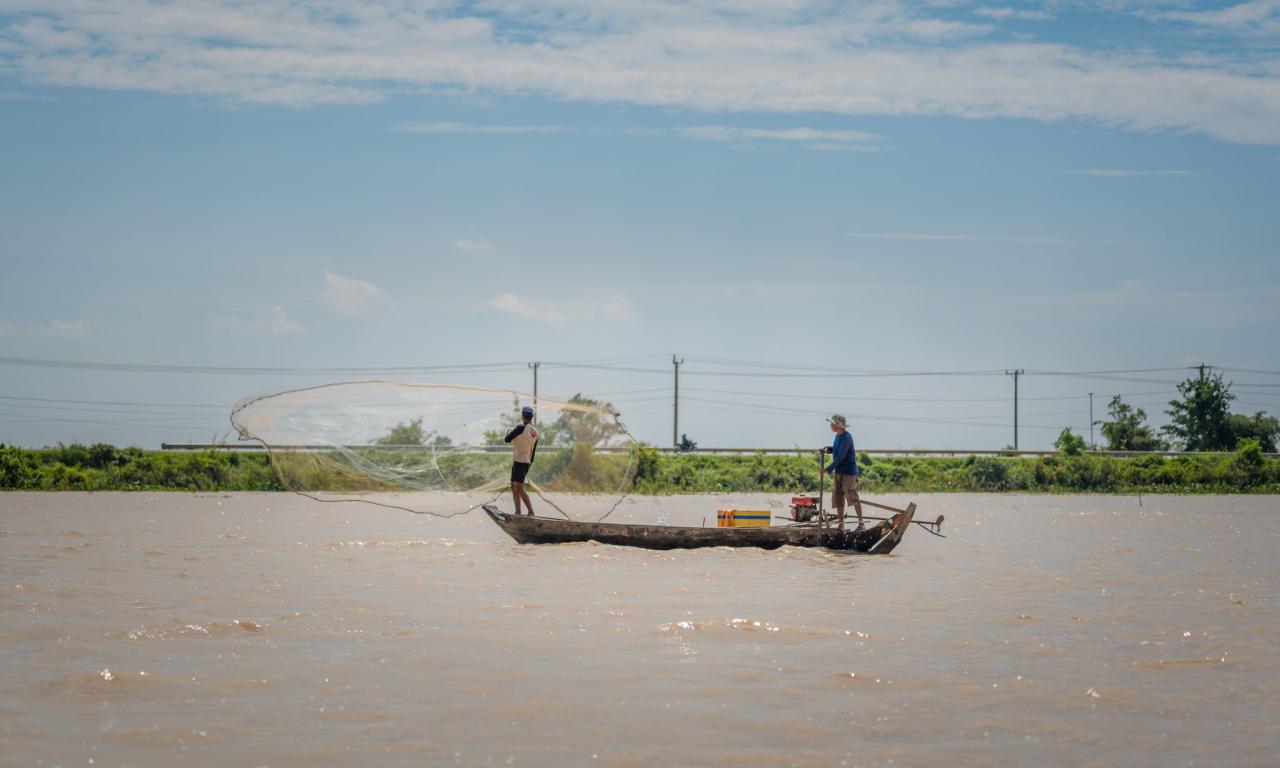
- Boeng Ream Fish Refuge and Boeng Sneh Lake illustrate how wetlands sustain fisheries, biodiversity, and livelihoods, while also revealing the pressures of overuse and wider ecological challenges.
- District Technical Working Groups (DTWGs) are bringing together government, community, and sectoral actors to jointly manage resources and resolve water-related conflicts.
- Digital Platforms like Telegram enabling real-time coordination, preserve shared knowledge, and elevate women’s voices in governance and decision-making.
Cambodia’s floodplains host vital wetlands that support food security, biodiversity, and livelihoods. Across these landscapes, community-led initiatives show how local stewardship can protect ecosystems while supporting the people who rely on them.
Boeng Ream Community Fish Refuge (CFR) Sustains Fisheries and Livelihoods
Boeng Ream Community Fish Refuge (CFR) in Kakoh Commune is a vital community-managed wetland that sustains rice-field fisheries and strengthens hydrological connectivity across Cambodia’s floodplains. Benefiting 3,325 households through rice farming and fisheries, it operates within a Farmer Water User Community (FWUC) under the Taing Krasaing Irrigation Scheme, part of a larger water management system. Introduced as part of Cambodia’s rice-fish system enhancement, CFRs like Boeng Ream function as dry-season sanctuaries for brood fish, replenishing stocks when floodwaters recede. Its hydrological role as a migration route between the Tonle Sap and local wetlands further supports fish movement and biodiversity, making it critical for both livelihoods and ecological resilience.
The Diverse Ecosystem of Boeng Sneh Lake Under Strain
Similarly, Boeng Sneh Lake (BSL) in Prey Veng Province is one of Cambodia’s largest freshwater wetlands, spanning 3,924 hectares, storing 80 million cubic meters of floodwater and sustaining over 10,900 households. The lake’s rich ecosystem provides habitat for indigenous fish species, migratory waterbirds, while its Multiple Use Area and bird sanctuary serves as a hub for community-based ecotourism. However, the absence of a formal institutional mechanism for cross-sector coordination at BSL has led to overexploitation, rising water-use conflicts, and threats to biodiversity. These challenges are being exacerbated by climate-induced droughts, intensified rice cropping (up to three times annually), growing agro-chemical use, illegal fishing, and speculative land encroachment, placing increasing pressure on the lake’s ecological balance and long-term sustainability.
